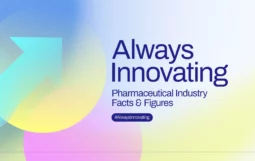Medicines are not luxury goods
I must admit I had been somewhat skeptical about the “WHO Fair Pricing Forum” held last week in Amsterdam. There were multiple reasons for my apprehension. One concern was clearly that the notion of “fair” is pretty much in the eye of the beholder, another was that none of the 300 expected participants had received any background documentation as the event date was coming closer. The video teaser on the conference website, more fit for a sensationalist TV program than a highly reputable international organization, did not raise my comfort level. A video so sensational, lack of fact-based evidence underlying the scenarios, and the announcement that the discussions would be based on voting on questions unknown beforehand, was not quite in line with what I expected from an event organized under Chatham House rules and under the auspices of the Dutch Government and the WHO World Health Organization (WHO).
Admittedly, I do not claim that I am not opinionated myself, but I am willing to review prior judgment. Luckily, my reservations proved to be exaggerated. Obviously, the debate was at times animated and energetic – as it should have been. And obviously, some critics of the industry, are firmly of the view that the business model is at a “dead end” and that the whole innovation system based on competitive research, granting of intellectual property rights, and the reward for the successful innovator needs to be fundamentally overhauled. Nevertheless, the contrarian view that this precise model has over the last 10 to 15 years brought forward a variety of therapeutic breakthroughs in disease areas such as cancer, hepatitis C or rheumatoid arthritis, to name just a few, remained in general surprisingly uncontroversial. Admittedly, the success and rich pipeline of the industry is also perceived as part of the problem due to the prices of innovative medicines and concerns about affordability and sustainability of funding. Notwithstanding the divergence of opinions assembled in Amsterdam, there was wide consensus among participants on at least two issues, namely on a call for action on drug shortages – a multifaceted issue that requires close collaboration across a number of stakeholders – and on the need for incentives and additional business models where the classic market approach has not yet delivered, in particular, new antibiotics.
All of this, and more, has been constructive. What baffled me a bit, but does not overshadow my generally positive assessment of the Forum, was the WHO reaction to the question, on which participants had been asked to vote, namely how a “fair drug price” should be established. As indicated above, there had not been a comprehensive background paper laying the ground for a thorough debate, yet participants had to cast their votes on a set of multiple choices. Participants were asked, “What is a fair price for a medicine? A price that:
- All payers can afford
- Provides an attractive return on investments to the developer
- Reflects the therapeutic value of medicine
- Covers the cost of bringing a medicine to market”
It was as if the result of the voting differed from what had been expected. The clear winner of the vote with a plurality (41.5 percent) was a price based on therapeutic value.
Unfortunately, there was not further debate on what this means for health care systems across the globe for the remainder of the moderated debate. Moreover, there was strong push-back by WHO representatives in their media briefing held after the Forum, based on the argument that “value-based pricing” might be appropriate for luxury goods like a Maserati or a Louis Vuitton handbag but certainly not for medicines.
I was baffled by this kind of reaction and, in particular, the reference to luxury goods. Baffled because there are well-established tools to assess therapeutic value, or, in particular, added therapeutic value of a new innovative medicines. There are tools which are based on the added medical value – does the new therapy provide a cure, better efficacy, better safety, improved quality of life, and what is the evidence level for the assessment of the added therapeutic value? – as well as on the cost effectiveness of the treatment, be it through traditional cost-benefit analysis, health technology assessment, or a more systemic view. Nothing like this exists for luxury goods like the Hermes or Louis Vuitton bag, the Maserati or Ferrari, quite the opposite. First year students of economics are hearing about Giffen goods or the Veblen (snob effect), the peculiar nature of some goods, luxury goods where demand rises with higher prices, an exception to classic economic theory of supply and demand curves. Yes, fashion or luxury brands cannot be compared to medicines, but the notion of an objective value-based metrics for assessing the adequacy of a “fair price” for a product, is certainly more appropriate for medicines than for luxury goods, all the more so since no real alternative to the notion of value-based pricing was presented.
Which brings me back to the start. It is undisputed that industry needs to be ready to argue its value proposition and that we cannot ignore the issue of affordability in both developing and advanced health systems. But rather than dogmatically rejecting the notion of “value-based”, one should get into a serious discussion on how to reform health systems to pay for outcomes rather than inputs.
Author






